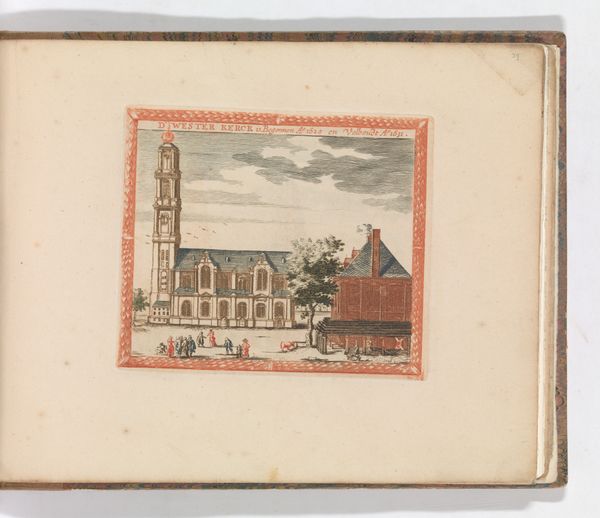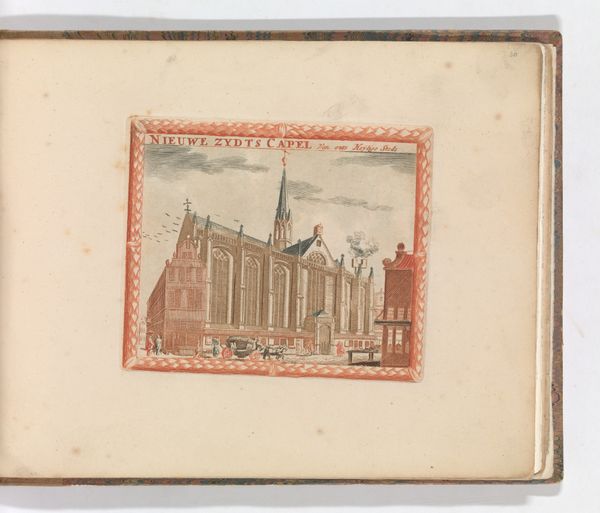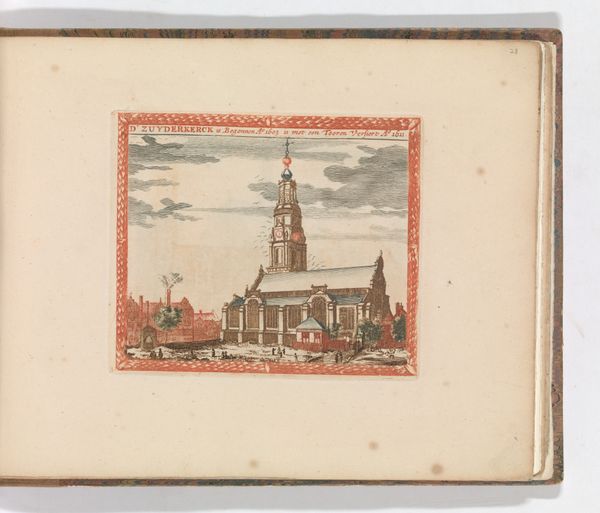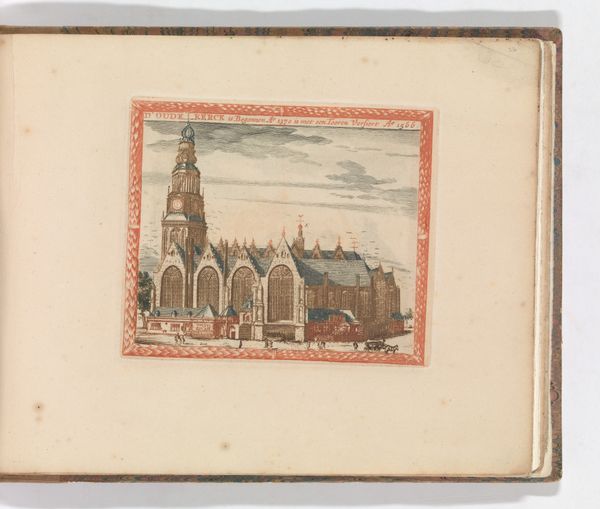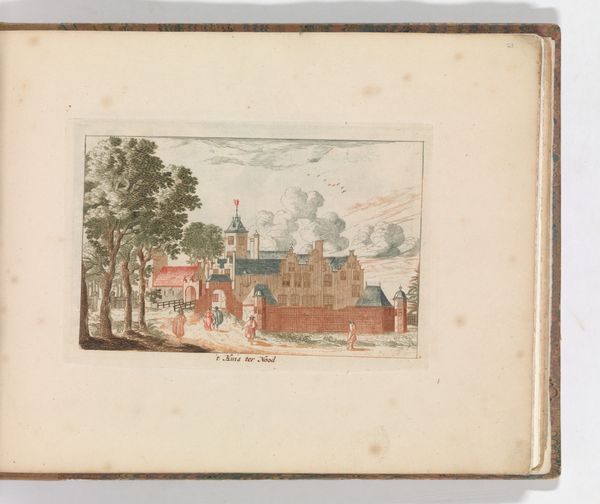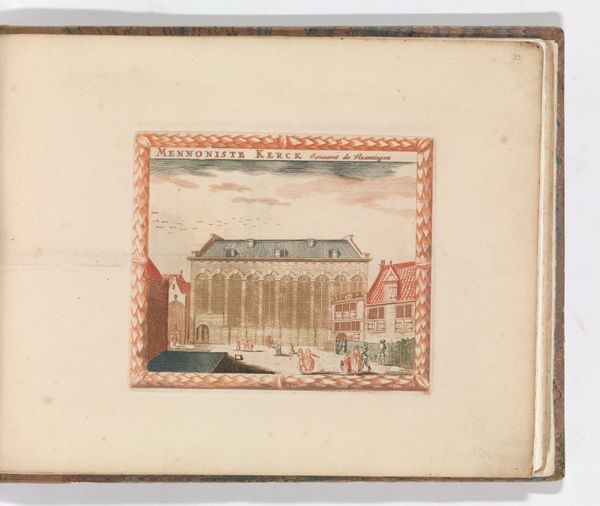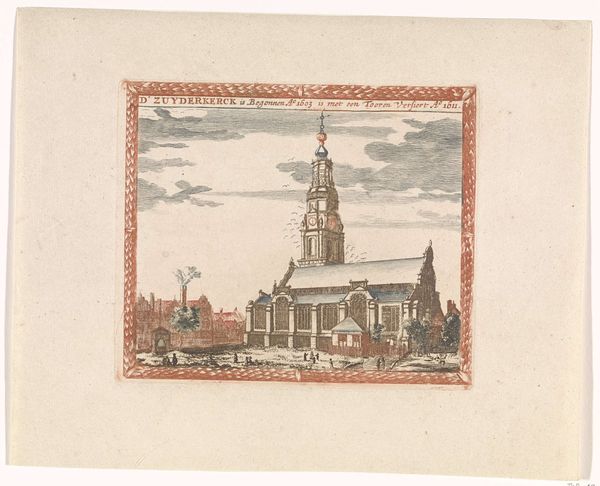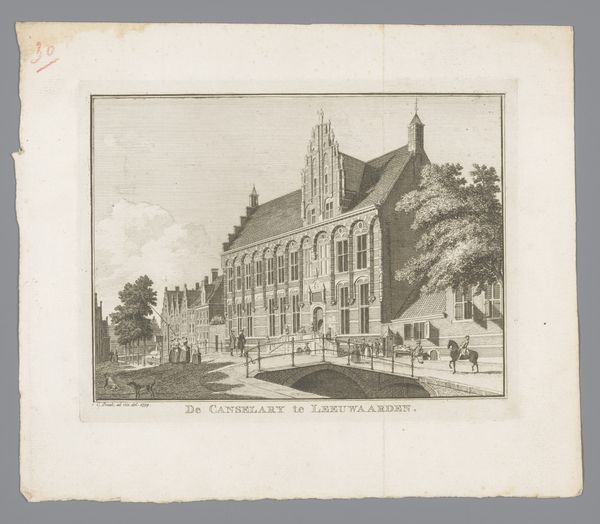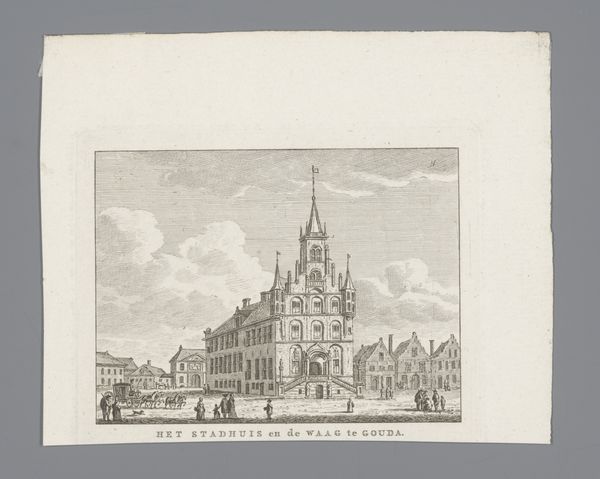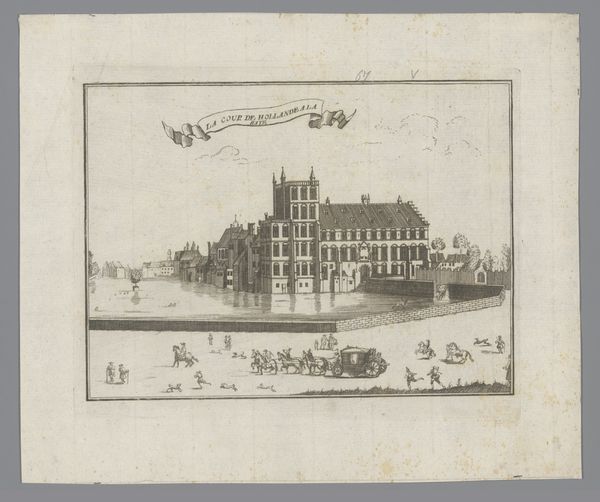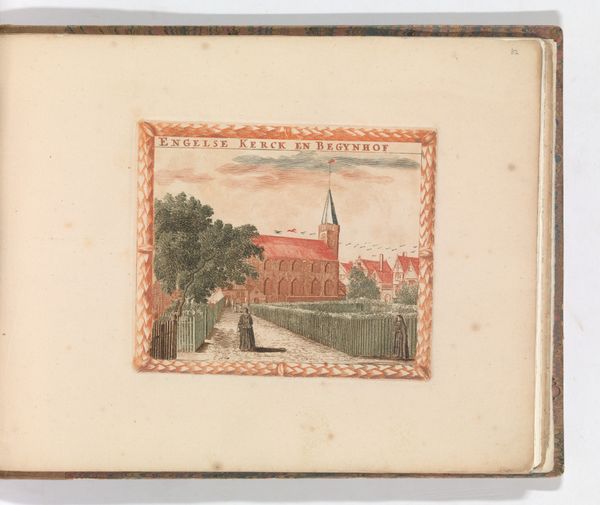
'D' Nieuwe Kerck', in: Tooneel Der Voornaamste Nederlands Huizen, En Lust Hoven, Naar T Leven Afgebeeld 1660 - 1693
0:00
0:00
drawing, print, etching
#
drawing
#
dutch-golden-age
# print
#
etching
#
cityscape
Dimensions: Plate: 4 3/4 × 5 11/16 in. (12.1 × 14.4 cm)
Copyright: Public Domain
Curator: Here we have a print dating from 1660 to 1693, titled " 'D' Nieuwe Kerck', in: Tooneel Der Voornaamste Nederlands Huizen, En Lust Hoven, Naar T Leven Afgebeeld," by Carel Allard. Editor: The print immediately evokes a sense of order and established society, with the towering church set against the meticulously rendered architecture. Curator: Absolutely. As a cityscape, the artist captures the grandeur of the Nieuwe Kerk, or New Church, in the Netherlands. The architecture embodies Dutch Golden Age aesthetics. What symbols catch your attention here? Editor: I am intrigued by the placement of people and vehicles. There is a sense of social stratification present; we see what appears to be the elite entering the church in carriages while others line the street. Curator: The image subtly reveals power dynamics. It depicts the church not just as a spiritual center but as a focal point of civic life and social hierarchy. Look at how light falls upon the steeple drawing our eyes upward to an idea beyond this earthly realm. Editor: Indeed. But it is the smallness of people, their diminishment when set against such imposing architectural statements, that draws me into broader narratives around institutional power and the role of individuals within these systems. What function did Allard seek to play by capturing such a depiction? Curator: I would argue it's a form of enshrining the image of societal structures. Think about the cultural implications of mass-producing an image for distribution among affluent citizens! They’re not just viewing art. They’re affirming their values in urban development. Editor: It is impossible to extract this representation from what would be understood, contemporaneously, about the power of images and their function to disseminate ideology! To return to Allard's strategic play with perspective, however: observe from what position he must have created this illustration. Who could stand there and gaze? Curator: A fascinating observation to challenge dominant assumptions that the work embodies social hierarchy. Editor: It encourages continuous revisiting and critical examination. Curator: An invaluable exercise when interpreting art history!
Comments
No comments
Be the first to comment and join the conversation on the ultimate creative platform.
